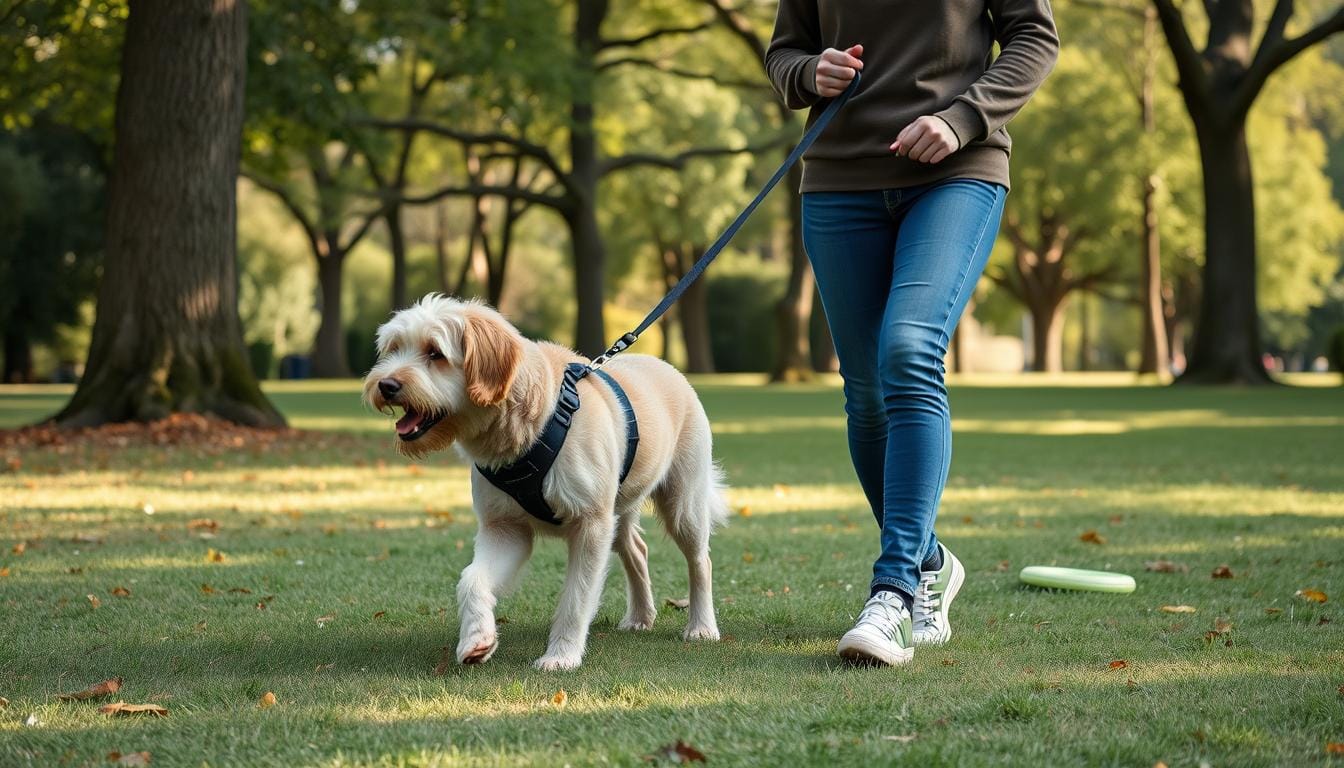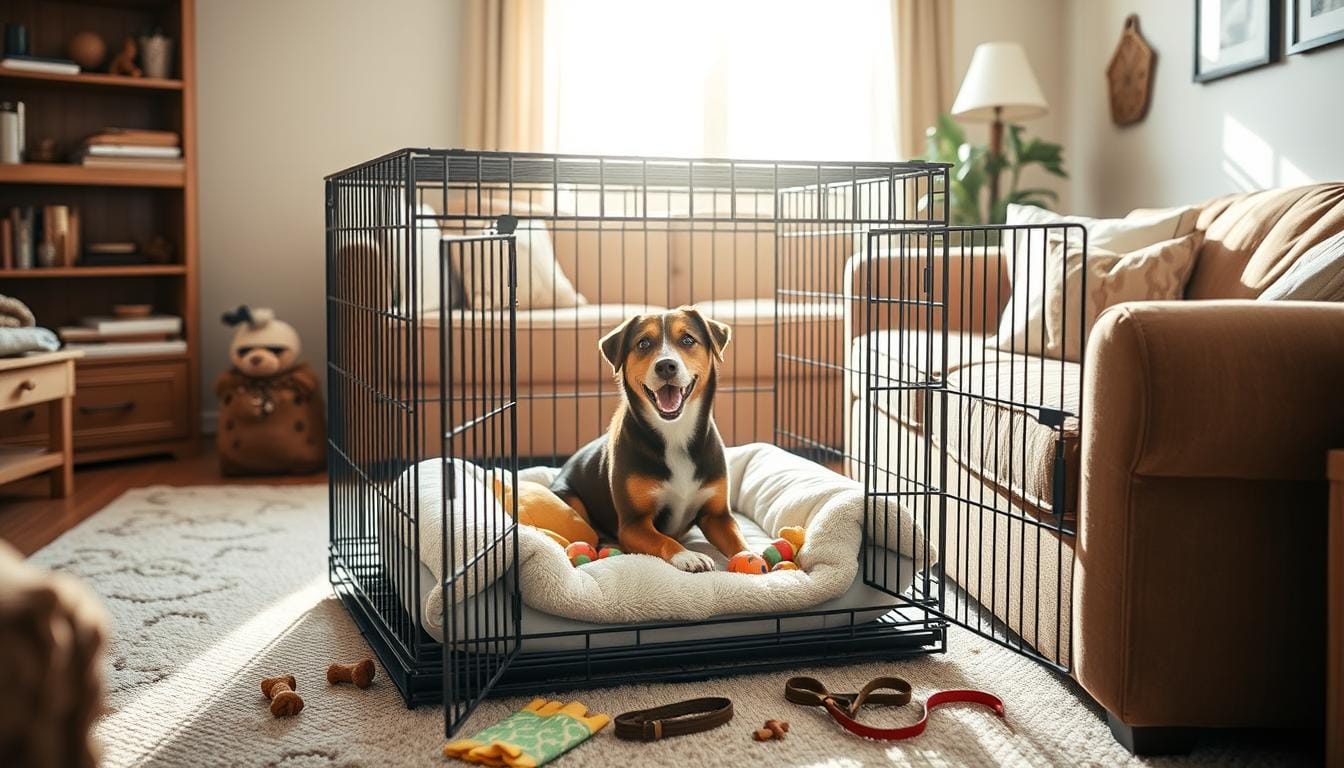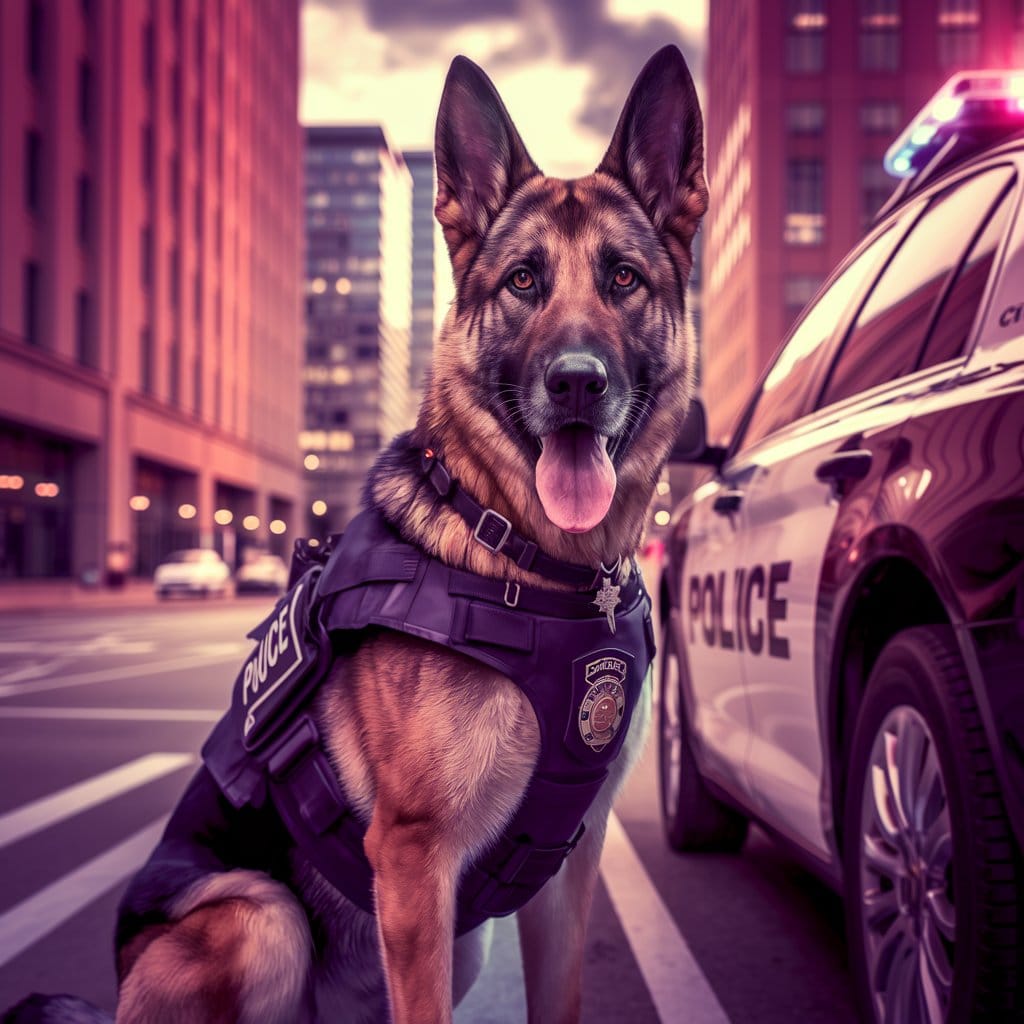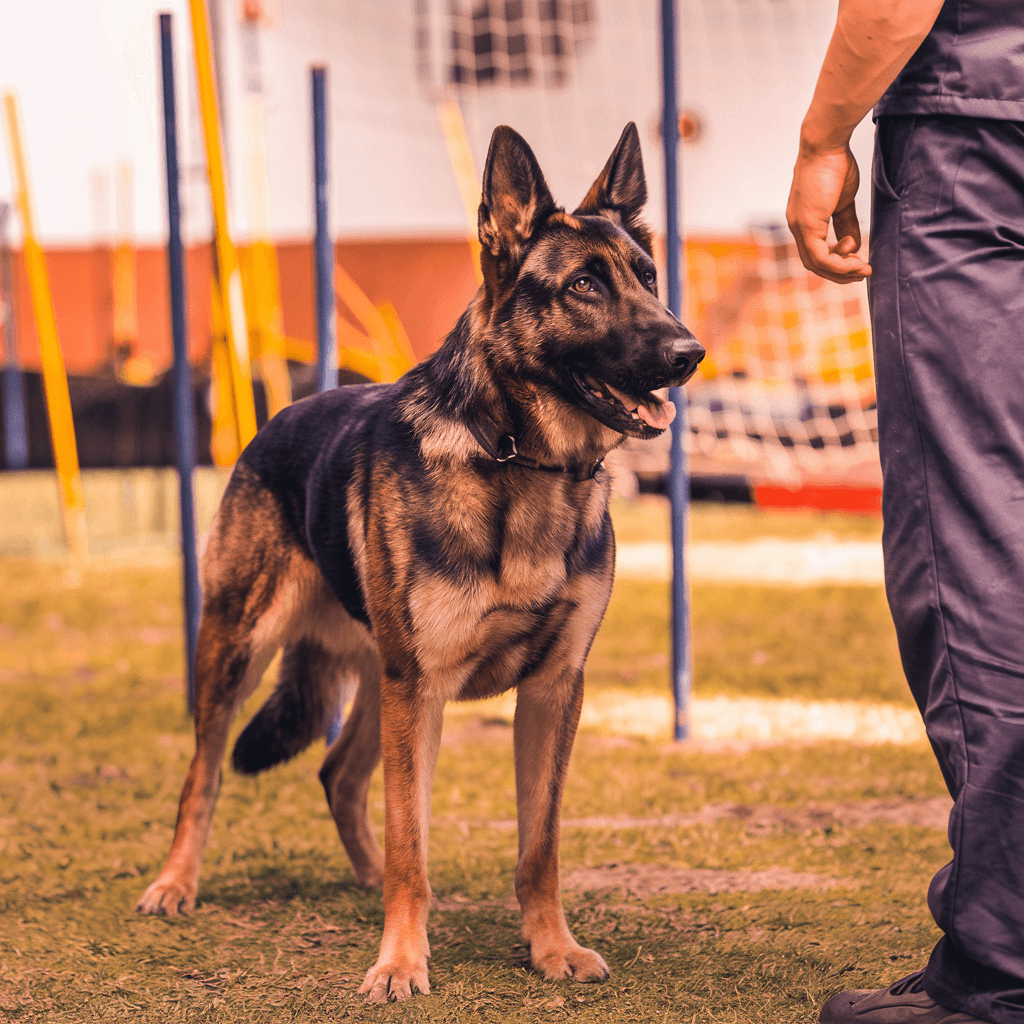Dogs can sense human emotions instinctively. They pick up on our feelings before we even know them. Dogs use body language, facial expressions, and scent to understand us.
Red eyes in dogs can mean different things. It could be a minor issue or something serious. As pet owners, we must watch our dogs’ eye health closely.
Dog eye problems can be simple allergies or serious like glaucoma. If your dog’s eyes are red, you’re not alone. Knowing why is key to their health.
This guide will cover why dogs’ eyes turn red, how to treat it, and how to prevent it. It’s useful for both new and experienced dog owners. It helps keep your dog’s eyes healthy.
Key Takeaways
- Red eyes in dogs can indicate various health issues
- Common causes include allergies, infections, and injuries
- Prompt veterinary attention is crucial for proper diagnosis
- Treatment varies depending on the underlying cause
- Regular eye care and preventive measures can help maintain dog eye health
- Understanding your dog’s subtle cues is important for early detection
Understanding Dog Eye Health
Dog eye health is key to their happiness and health. As pet owners, we must focus on dog health care, especially eye check-ups. Let’s look at why eye care matters, common eye issues, and when to see a vet.
The importance of eye care for dogs
Good eye health is vital for dogs to enjoy life. Regular eye care stops serious problems and finds issues early. Dogs often face eye diseases like dry eye, cataracts, and glaucoma. Some breeds are more at risk due to their looks or genetics.
Common signs of eye problems in dogs
Spotting eye issues in dogs is key for quick treatment. Look for:
- Redness or swelling
- Excessive tearing or discharge
- Squinting or rubbing eyes
- Changes in pupil size or iris color
- Cloudiness or opacity in the eye
When to seek veterinary attention
Quick vet visits are crucial for dog eye health. Get help right away if you see:
- Sudden eye changes
- Persistent redness or irritation
- Thick, opaque eye discharge
- Signs of discomfort or pain
Acting fast can stop big problems and vision loss. Regular vet visits are key to spotting and stopping eye diseases in dogs.
| Eye Condition | Common Symptoms | At-Risk Breeds |
|---|---|---|
| Dry Eye | Redness, thick discharge | Cocker Spaniels, Bulldogs |
| Glaucoma | Eye pain, cloudiness | Basset Hounds, Chows |
| Cataracts | Cloudy lens, vision changes | Poodles, Siberian Huskies |
Environmental Irritants and Allergens
Dogs often get red eyes from things around them. Knowing what causes it helps pet owners fix the problem. Let’s look at why your dog’s eyes might be red and how to fix it.
Seasonal Allergies Affecting Dog Eyes
Dogs can get seasonal allergies just like people do. Pollen, mold, and other particles in the air can make their eyes red and itchy. Most dog allergies start after six months, especially in older dogs.

Common Household Irritants
Things in your home can irritate your dog’s eyes. Dust, cleaning products, and some fabrics can cause problems. Flea saliva is a big allergen that can make eyes itch a lot.
To avoid these issues, clean often and use safe products. This can really help.
Preventing Exposure to Allergens
Reducing allergens can keep your dog’s eyes healthy. Here are some tips:
- Vacuum often to get rid of dust and allergens
- Use air purifiers to clean the air inside
- Wash your dog’s bedding regularly
- Wipe your dog’s paws after they go outside
- Try changing your dog’s diet if allergies are suspected
If your dog’s eyes are still red, see a vet. They might suggest medicine to help. Early treatment is important for your dog’s eye health.
Trauma and Eye Injuries
Eye injuries in dogs are serious health issues. Our furry friends often face dangers that can harm their eyes. From running through bushes to fighting with other pets, dogs are at risk. Let’s look at common eye traumas and how to recognize them.
Dogs can get many types of eye injuries, including:
- Corneal ulcers and lacerations
- Foreign objects in the eye
- Eyelid lacerations
- Blunt trauma leading to more severe conditions
Symptoms of eye trauma in dogs include squinting, excessive blinking, cloudy cornea, or visible blood. If your dog is pawing at their eye or tearing up more, it’s time to see a vet.
Quick diagnosis and treatment are key for healing. Mild corneal ulcers might need antibiotic eye drops. But, more serious cases might need a vet ophthalmologist’s care. Healing time can range from a few days to weeks, depending on the injury.
Your vet might suggest using an Elizabethan collar (e-collar) to protect your dog’s eyes. These collars stop dogs from pawing at their eyes. For active dogs, goggles like Doggles™ or Rex Specs K9 Eyewear™ can also offer protection.
Remember, all eye injuries in dogs are serious. Even small issues can cause scarring or vision loss if not treated. By being watchful and getting quick care, we can help our dogs keep their eyes healthy for life.
Conjunctivitis in Dogs
Conjunctivitis is a common eye problem in dogs that makes their eyes red and uncomfortable. If you’re wondering why your dog’s eyes are red, this might be the reason. We’ll look at what causes it, its symptoms, and how to treat it.
Causes of Canine Conjunctivitis
There are many reasons why dogs get conjunctivitis. Allergies, especially in dogs with atopic dermatitis, are a big cause. Viral infections, like canine distemper, can also cause it and last 3-4 weeks.
While primary bacterial conjunctivitis is rare, secondary infections are common. These happen because of other problems. Staphylococcus and Streptococcus are often the bacteria behind these infections.

Symptoms and Diagnosis
Signs of conjunctivitis include:
- Red, swollen eye membranes
- Excessive tearing or discharge
- Frequent blinking or squinting
- Itching and discomfort
- Light sensitivity
To diagnose conjunctivitis, a vet will do a detailed eye exam. They might use special stains, test tear production, and take bacterial cultures. Catching it early is key to helping your pet.
Treatment Options for Conjunctivitis
Treatment depends on the cause but may include:
- Antibiotics like gentamicin or tobramycin
- Antiviral medications
- Steroids or immunomodulatory drugs
- Saline eye washes for cleaning
In some cases, surgery might be needed. Most dogs recover well, but chronic cases might need ongoing treatment. Quick action is important to stop the problem from getting worse and to make your dog more comfortable.
Corneal Ulcers and Their Impact
Corneal ulcers are a serious issue for dogs’ eyes. They are open sores on the eye’s surface. These can be very painful and might harm a dog’s vision if not treated.
Brachycephalic breeds, like Pugs, Shih Tzus, and Bulldogs, are more likely to get them. This is because their eyes stick out more.
Common reasons for corneal ulcers include:
- Physical injuries (e.g., stick injuries, cat scratches)
- Foreign objects in the eye
- Dry eye syndrome
- Eyelid abnormalities
- Eye infections
Symptoms of corneal ulcers include a lot of tearing, squinting, and redness. If you see these signs, get your dog to the vet fast. Simple cases can heal in 7-10 days with the right treatment.
This treatment usually includes antibiotic eye drops and pain meds.
For more serious cases, surgery might be needed. This could be things like conjunctival grafts or keratotomy for ulcers that won’t heal. The cost of treatment can be high, which is why pet insurance is important for unexpected eye problems.
Regular vet visits and quick action on any eye issues are crucial. They help keep your dog’s eyes healthy and prevent problems from corneal ulcers.
Glaucoma: A Serious Eye Condition
Glaucoma is a big threat to dog eye health. It happens when too much pressure builds up in the eye. This can lead to blindness if not treated early. It’s important to watch our furry friends’ eyes closely.
Early Signs of Glaucoma in Dogs
Spotting glaucoma symptoms early is key for dog health care. Look for these signs:
- Redness in the eye
- Squinting or signs of eye pain
- Cloudy cornea
- Dilated pupils
- Bulging eyeball
If you see any of these signs, it’s time to see a vet right away.
Diagnostic Procedures for Glaucoma
Vets use tests to find glaucoma in dogs:
- Tonometry: Checks eye pressure
- Gonioscopy: Looks at drainage angles
- Ophthalmoscopy: Checks optic nerve damage
Normal eye pressure in dogs is 20-28 mmHg. Pressures over 40-50 mmHg need urgent care.
Treatment and Management Strategies
Treating glaucoma aims to lower eye pressure and save vision. Here are some ways:
- Medications: Eye drops like prostaglandin analogs can lower pressure
- Surgery: Cyclophotocoagulation or gonio-implantation might be needed
- Combination therapy: Mixing medical and surgical methods works best
In severe cases, removing the eye might be the last option. Regular check-ups are crucial to keep an eye on the condition and adjust treatment.
“Early detection and proper management are key to preserving your dog’s vision and quality of life when dealing with glaucoma.”
Uveitis: Inflammation of the Eye
Uveitis is a serious eye problem in dogs that makes pet owners wonder why their dogs’ eyes are red. It affects the uvea, the middle layer of the eye, causing inflammation and pain. We’ll look at the causes, symptoms, and treatment options for this condition.
Uveitis can come from infections, metabolic diseases, trauma, and immune issues. Dogs with uveitis show intense redness, squinting, and too much tearing. In bad cases, you might see cloudiness or blood in the eye.
To diagnose uveitis, a vet does a detailed eye check and tests to rule out other issues like glaucoma. They use special tools like tonometers and ophthalmoscopes. Blood tests and imaging might also be needed to find the cause.
| Symptom | Description |
|---|---|
| Eye Redness | Intense redness in the affected eye |
| Pain | Squinting or excessive blinking |
| Discharge | Watery or mucoid eye discharge |
| Light Sensitivity | Avoiding bright lights |
| Cloudy Eye | Foggy appearance of the eye |
Treatment for uveitis aims to reduce inflammation and manage pain. Vets often use topical corticosteroids or non-steroidal anti-inflammatory drugs. It’s also important to address any underlying causes. Regular vet visits are key to track progress and prevent complications.
Early diagnosis and treatment are crucial for a good outcome. Most dogs start to get better within 24 hours. But, severe or ongoing cases can lead to vision loss. If you see any eye problems in your dog, see a vet right away.
Dry Eye Syndrome in Canines
Dry eye syndrome, or keratoconjunctivitis sicca (KCS), is a common eye problem in dogs. It happens when dogs don’t make enough tears. This can cause discomfort and vision issues. It’s important to know the causes, symptoms, and treatments for good dog health care.
Causes of dry eye in dogs
Several factors can lead to dry eye in dogs:
- Immune diseases that harm tear glands
- Infections like canine distemper virus
- Certain medicines
- Hypothyroidism
- Nerve damage
Some breeds are more likely to get dry eye. These include American Cocker Spaniels, Bloodhounds, and Cavalier King Charles Spaniels. Short-faced dogs like Boston Terriers, Pugs, and Shih Tzus are also at risk.
Symptoms and diagnosis
It’s key to spot the signs of dry eye early:
- Red and irritated eyes
- Discharge
- Corneal ulceration
- Corneal scarring
Vets use the Schirmer Tear Test to check for dry eye. They also look at the dog’s medical history and symptoms. This helps confirm the diagnosis.
Treatment options and management
Managing dry eye in dogs is a lifelong commitment. Treatment aims to boost tear production and protect the cornea. Common treatments include:
- Tear stimulant medications (applied twice daily)
- Artificial tears
- Immunosuppressive drugs like cyclosporine and tacrolimus
- Regular eye cleaning
In severe cases, surgery might be needed. This involves moving the salivary duct to help the eyes. With the right treatment, dogs with dry eye can live a pain-free life.
| Aspect | Details |
|---|---|
| Common age group | Middle-aged to older dogs |
| Diagnosis method | Schirmer Tear Test |
| Treatment duration | Lifelong |
| Potential complication | Corneal ulcerations |
Congenital Eye Defects in Dogs
Congenital eye defects in dogs are present at birth. They can greatly affect their vision and health. These issues are often passed down from parents, so breeders and owners need to know about them. We’ll look at common congenital eye defects and how they impact dog health.
Some breeds are more likely to have certain eye problems. For example, Basenjis and Welsh Corgis often have a condition called persistent pupillary membrane. Doberman Pinschers might have persistent hyperplastic primary vitreous. English Springer Spaniels can get multifocal retinal dysplasia, and Collies often have collie eye anomaly.
Glaucoma is a serious eye problem in dogs that can cause vision loss if not treated. Normal eye pressure in dogs is between 10 to 25mmHg. Primary glaucoma happens when the eye can’t drain properly. Secondary glaucoma is linked to other eye diseases or injuries.
Progressive retinal atrophy (PRA) is a hereditary condition that causes blindness in dogs. It affects both day and night vision as the retina degenerates. Poodles, Labrador Retrievers, and Cocker Spaniels are more likely to get PRA.
- Early signs of PRA include dilated pupils and reluctance to enter dark places
- Diagnosis involves a focused eye exam and possibly electroretinography
- There’s no cure, but affected dogs can maintain a good quality of life with proper care
Regular eye exams are key for catching congenital eye defects early. The Eye Scheme, started in the 1960s, helps find eye problems in dogs. It’s important for all breeding dogs, no matter their pedigree.
By knowing about these conditions and focusing on dog health care, we can help our pets keep their eyes healthy for life.
Dog Eye Health: Prevention and Care
Keeping our furry friends’ eyes healthy is key for their happiness. Dogs mostly use their sense of smell, but eye care is still important. Let’s look at ways to keep their eyes in great shape.
Regular eye cleaning techniques
It’s important to keep your dog’s eyes clean. Use vet-approved wipes or saline solution to gently clean around their eyes. This helps prevent infections and catches any early signs of trouble.
Also, trim the fur around their eyes carefully to avoid irritation.
Protective measures for active dogs
For dogs who love to explore, protecting their eyes is crucial. RexSpecs offers K9 goggles for active dogs. These goggles shield their eyes during outdoor activities.
They help reduce eye injury risks and keep your dog’s vision clear.
Nutritional support for eye health
A healthy diet full of antioxidants is vital for dog eye health. Foods like blueberries, carrots, and salmon help protect their eyes. Adding these to their meals supports their eye health and overall well-being.
Regular vet visits are also important. They help monitor your dog’s eye health and catch any issues early.
















